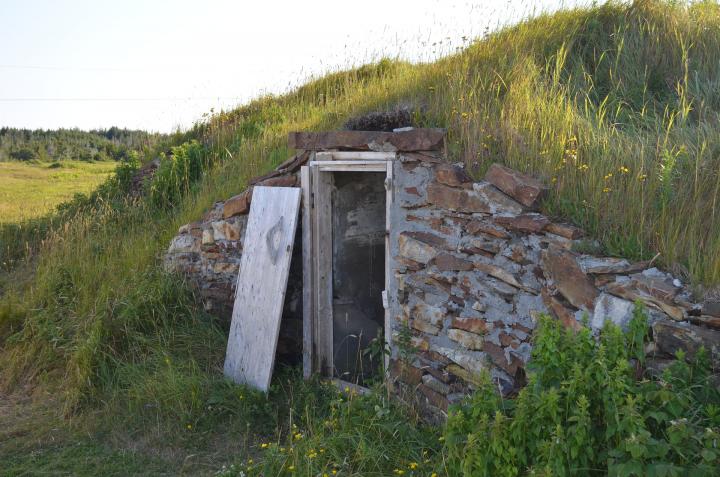
Those “Little Buildings”…Summer Kitchen?

1975 Located behind Arcanum Public Library-once part of Ivester House
Recently we posted this question on our AWTHS FB page regarding “What are those little buildings sitting behind a main house”? What was their purpose or what were they called? We received a variety of comments among them: summer kitchen, smoke house, root cellar, storage of ice and food, carriage house, canning building, pantry, water pump shed.
We did some digging in AWTHS files for the notes Bill Gunder used when writing about the “Arcanum Public Library” book which AWTHS did have for sale. We also asked the library if they had any additional history on the Ivester home or building especially the little building behind the library.
We will share with our readers the history written by Celia Long in 1979.
The following information describes the building and was prepared by Celia Long in 1979. She retired as a board member in 1978 and died in 1982 at the age of 79. She had been a public school educator for 43 years in Middletown, Ohio.
Miriam Lockman rewrote the material in 1984.
Celia was often invited to play with the Ivester children and recorded her memories as a child visiting the big house in the early 1900s.
The well was half-way between the house and barn. Water was piped into the milk trough in the cellar. (This aided in keeping food and dairy products cold before ice boxes and refrigeration). There was a summer kitchen and smoke house made of brick.
Back of the first floor: On the west side at the back was the kitchen. Back of this was a long room which was the summer kitchen where washing, canning and cooking occurred. The original brick wall is on the one side. It is now the work room and storage room for sorting books. (We do not know if this was now or before the addition).

The carriage house was removed for a parking lot around 1982. There was also a small milk house and barn on the property at one time as well.
We encourage you to purchase this book (Arcanum Chronicles Vol. II) or go into the library and read the details about the house including the description of the rooms. It will give you a good understanding of the beautiful property as well as the outside buildings and landscaping. It includes the Ivester family history along with the house, building, Ivy Ester Tavern and library history. https://awths.org/publications/book-for-sale/
We are fortunate to have Celia Long’s history and notes. That is why preservation of buildings, stories and documents are important to tell the story generations later.

From reading this we would speculate the little brick building was a summer kitchen and smoke house. Summer kitchens were used to keep the heat from the fireplace or cook stove out of the main house during the hot summer months while cooking and canning. It also was recorded as a way to contain a fire as kitchen fires were a threat and it was thought better to contain the fire than burn the whole house down. Other thoughts were helping keep cooking odors at bay away from the main house. The summer kitchen could also be used for a variety of uses including laundry, weaving or spinning as well as storing food items such as a pantry. We’ve included some links we researched about summer kitchens.
ttps://archive.curbed.com/2016/6/16/11954538/old-house-kitchen-history-summer;
https://www.bobvila.com/articles/summer-kitchen/
https://www.metroparks.net/blog/summer-kitchens-all-the-rage-in-1880s/

The library notes mention the smokehouse as well. Since there was a chimney that is possible. Before the advent of refrigeration, the only way people could preserve meat was by drying or smoking it
If you have a building that looks like there was a fire inside or smoky smell it could very well be a smokehouse or at one time. https://www.mcall.com/news/mc-xpm-1988-12-25-2658476-story,amp.html
The steps leading down could be a root cellar to help store and preserve root veggies during winter along with other food items. Here’s a link to read up on the old root cellar: https://www.google.com/amp/s/www.almanac.com/content/root-cellars-types-and-storage-tips%3famp


Well we have more to discuss so more blogs will come in June about the spring house, pump house and well house.
Please share your photos with us if you have any of these type buildings on your property or stories about your experiences or how your family used them.
Please follow AWTHS guidelines for this blog content.
